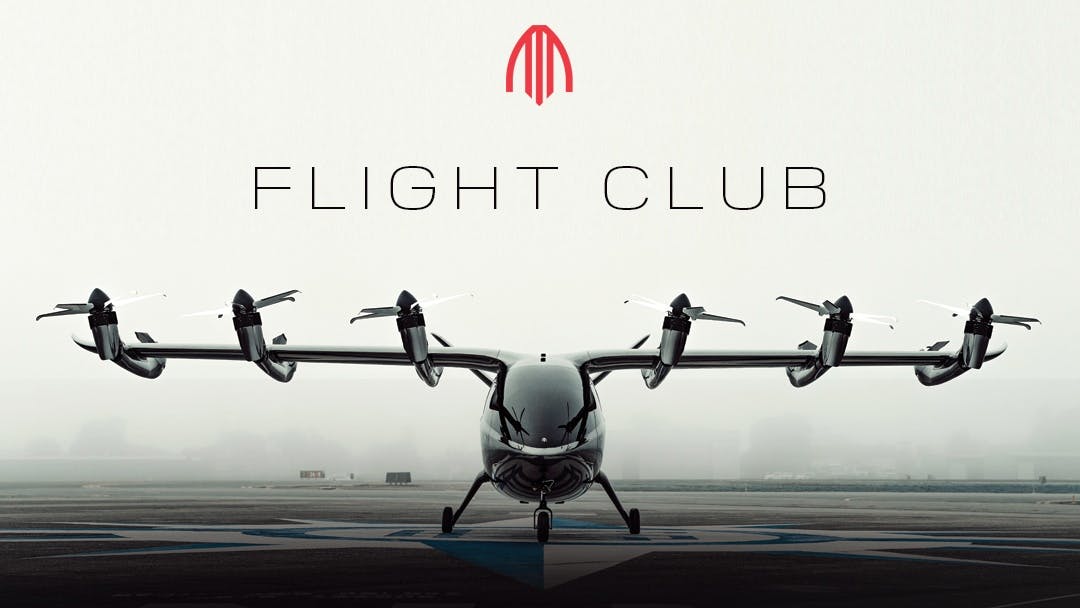
The dawn is breaking on the next era of mobility. As we venture further towards a safer, more sustainable future, there is still much to discover. Urban Air Mobility (UAM) is a solution for all, and we welcome those eager to discover more. Welcome to unique insight into this journey. Welcome to Archer’s Flight Club.
Though Flight Club has just recently launched, the response has been overwhelming and we thank the many fans who submitted their questions. Below are just a few of the many intriguing powertrain focused questions that we received, each one answered by those at Archer leading the way into the next era of mobility. In the coming days, we’ll share answers to more of your questions, covering topics related to our aircraft in flight, aerial ridesharing operations, and more. Keep following along to learn more about eVTOL and take your part in the next round of the Archer Flight Club.
Q: What is the exact goal of the creation of this aircraft? - bobbyhopkins22, Instagram
A: We are at an inflection point right now. We’re seeing unprecedented growth in traffic, in cities all over the world. We’re seeing peak carbon emissions globally as a result of the transportation sector. What we’re trying to do at Archer is to help create a world where people can move more freely and more sustainably. Maker is helping us get there. It’s demonstrating that we can commute more efficiently, sustainably, and safely. It’s laying the groundwork for the future of eVTOL aircraft and a new way to move. Ultimately, Urban Air Mobility, or aerial ridesharing, can positively impact the way we all live. That’s our goal, our passion, and what all of us at Archer are working towards. - Brett Adcock, co-founder and co-CEO
Q: How does an electric powertrain for eVTOL aircraft differ from automotive electric powertrains? - lcarol424, Twitter
A: There are three main differences between an automotive powertrain and an eVTOL powertrain:
- On a global perspective, both share the same physics and solution space. But when it comes to optimization targets, the primary focus for eV’s is cost while the primary focus for eVTOL aircraft is weight. This leads to different choices for materials and components used.
- Differences in the mission profile - and more specifically in the duration for which peak power has to be maintained (e.g., a 5 second 0-60 acceleration vs. hovering about 1 minute).This drives eVTOL aircraft to battery cells that shade more towards the power side of the power vs. energy trade off inherent in lithium ion batteries.
- The overall system reliability requirements drive us to use redundancy throughout the powertrain (i.e., 12 motors and multiple battery packs connected in an intelligent way) to ensure a very high degree of powertrain reliability. If there is a component failure in an automotive powertrain you can pull over to the side of the road and it is an inconvenience, while for an eVTOL aircraft we have to maintain flight and land safely. - Dr. Michael Schwekutsch, Sr. VP, Powertrain, HV, & Battery Systems
Q: Is Maker adapted to cold weather? - Eugenio_borobin, Instagram
A: There are a number of considerations for operating an eVTOL aircraft in cold weather. First there is passenger comfort, which we ensure through the use of cabin heaters in our environmental control system. Next is thermal management of the battery packs. It will be important to thermally precondition the battery packs into their operating temperature envelope before the first flight of the day. Finally, there are considerations due to external factors such as snow and ice. We do not plan to certify our aircraft for flight into known icing (FIKI) conditions. However, we do intend to design and test for compliance with FAA regulations regarding the ability to safely detect and exit inadvertent entry into icing conditions. - Dr. Geoffrey Bower, Chief Engineer
Q: What would you say are the needs from a thermal management perspective in the eVTOL platforms? Any gaps around thermal management, either current or foreseen? - Felix M., LinkedIn
A: Thermal management is very important on an eVTOL aircraft, both for passenger comfort and for maintaining onboard systems within their operating temperature limits, even at extreme conditions. An environmental control system providing both heating and cooling is required to provide a comfortable cabin environment for the pilot and passengers. Such a system may also be required to maintain some avionics systems within their operating temperature limits. The electric powertrain, consisting of electric motors, inverters and batteries, also requires thermal management to keep operating temperatures within limitations, throughout the operational envelope. There are lots of interesting design tradeoffs in these systems (e.g., air vs. liquid cooling, self contained vs. distributed) that have a big impact on performance and overall system reliability. We don’t see any gaps in the thermal management technologies that exist today, but are always striving to find more efficient and lighter weight design solutions to meet our thermal management requirements. - Dr. Geoffrey Bower, Chief Engineer
Q: What is the Archer philosophy on aero-acoustics, especially in regards to community acceptance? "The industry" seems to want a very low magnitude broadband signal. Presuming you agree with that, how does your technology achieve that? - Mark W., LinkedIn
A: We are extremely cognizant of acoustics when it comes to the development of our eVTOL aircraft. Numerous studies have shown the negative effects that high decibel levels can have on an urban environment. Our aim is for our aircraft to be nearly 30 dB quieter than a helicopter in cruise, quiet enough that the noise signature from the vehicle will blend into the background. One way we’re aiming to achieve this is with our propeller design. In forward flight our tilt propellers spin on axes that are aligned with the oncoming air flow, as opposed to helicopter rotors which spin edge-wise to the flow, creating their infamous “wop-wop” sound. In addition, we’re using 12 smaller propellers, instead of one large rotor, which allows us to spin them at significantly lower tip speeds, further reducing the decibel level produced. You can learn more about our approach to noise reduction in this blog post. - Ben Goldman, Manager, Acoustics
Read more responses from Flight Club:

